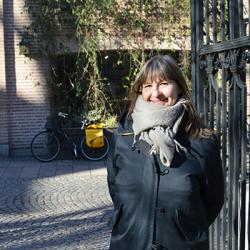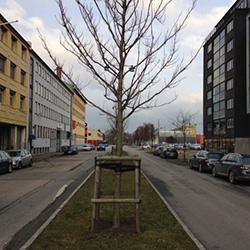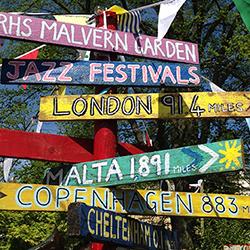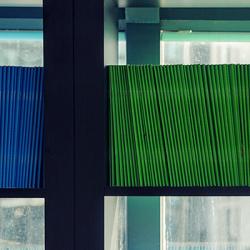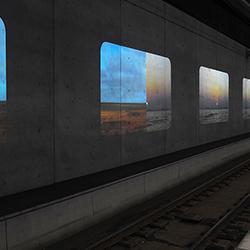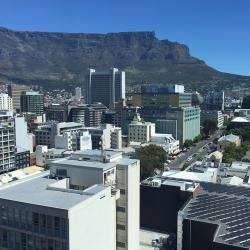New planning tool for culture in Gothenburg
Take part of an interview that takes it starting point from a cultural policy assignment focusing on attractive living environments in Gothenburg's, through the inventory of Lindholmen’s cultural values and finally exploring the role of culture in urban planning today.
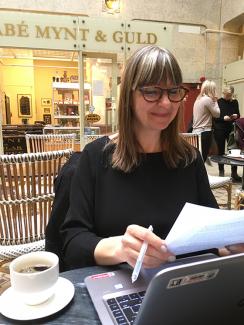
How is Göteborg going to be a leading culture and event city? A new Culture Program was found to be the solution. As early as in 2013 the program was adopted by Gothenburg’s Cultural Council in order to set the direction forward. The Culture Program was divided into areas of art policy, cultural policy and cultural planning. For 18 months the architect Mie Svennberg has worked with the cultural planning area in the strategic department of the City of Gothenburg’s Cultural Affairs Administration. She has put in a lot of effort together with others to develop a cultural planning strategy that aims at creating an attractive living environment in Gothenburg.
The Culture Program points out three sub-goals that cultural planning will serve:
• Clarifying the city's character and history
• Create good conditions for sustainable development
• Increase Gothenburg's ability to influence the physical environment
Mie has also been developing an inventory tool called Culture Impact Assessment, KKA. Lindholmen in Gothenburg was selected as a pilot are and she has edited existing and compiled new material about the area to test out the new tool. The mapping of Lindholmen is intended to contribute to the development of the area. A lot is happening in the area at the moment. Geely, a Chinese company, are going to build a center for cutting-edge technology linked to self-driving cars and the Swedish construction giant Serneke, is building Karlastaden on the old shipyard. To find out what role the culture can play in that development is urgent. According to Mie:
- It’s happening now!
First time the tool is being tested
When we meet for the interview, Mie has just handed off her work on compiling a KKA for Lindholmen and ended her position at the Cultural Affairs Administration. The report is based on the area's cultural values and she has proposed priorities based on the inventories made. The report has looked at the cultural environment, a scientist has looked at aesthetic values, architectural educators have worked together with school classes around the streets, meeting places and hubs and the city district administration has invented business activities. A report based on interviews with free cultural practitioners has been developed together with the university and so on. To make a priority list based on materials obtained with the help of a broader cultural concept, where more values than cultural environments are included, have not previously been done in Gothenburg. The inventory of the selected neighborhoods Lindholmen and Kortedala has served as test beds and is to be evaluated by the Cultural Affairs Administration, before the Cultural Administration can proceed with examining more areas.
"For the planning process this material is great. Perhaps no direct news for those already involved in terms of the cultural values found at Lindholmen, but that the Cultural Affairs Administration makes priorities among them is something new, says Mie.
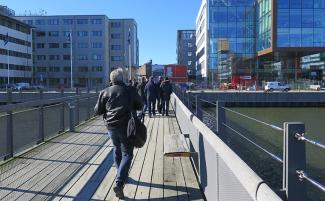
A dying sector?
However, a lot of questions remain for the KKA inventory to have an effect, such as how Cultural Affairs Administration should organize itself to continue working. According to Mie cooperation with other administrations is needed, where it is made explicit who is responsible for what. Discussions have also been conducted on producing metrics and indicators for culture. Conflicts between different interests have long been part of the planning process. All the parameters and factors in the complex process should ultimately be considered both in terms of money and social benefits. Previously, social and cultural values have often been regarded as expenditures, part of a dying sector, but maybe this will change when clarity increases?
"There is something called social investment and socio-economic benefits that the Administration for Allocation of Social Welfare has an assignment to look at. The Cultural Affairs Administration strategic department has had an initial conversation with them, but the process is just beginning on how we can think about the role of culture in the economy, Mie says.
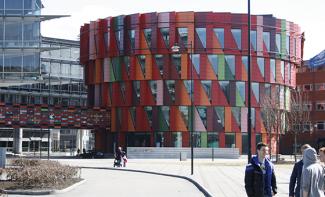
But everything does not have to cost money when it comes to culture. The intention to densify areas Mie believes is possible to do in harmony with the cultural environment and not at the expense of it. Especially if there are indicators of urban qualities that the entire city is behind and where the cultural values are included.
“It felt like a given to highlight the shipyard heritage. In the area there are numerous qualities of cultural heritage, identity and robust premises. The list can be made long and it aims to capture the essence of Lindholmen from a cultural perspective. If we want that feeling to be left, this is what we should do, she says.
Will it change anything?
Of the five values that the KKA captures, two are already considered in similar tools the City of Gothenburg has develop, the Social Impact Assessments SKA and Child Impact Assessments, BKA. The value associated with meeting places can be added to these tools with some adjustments. The same applies to the identity value, Mie believes. The categories: Aesthetic values as well as creative and co-creative artistic activities and industries should be handled by the Cultural Affairs Administration. And, of course, the cultural environment, a category that the Cultural Affairs Administration has long been a referral body for the planning process.
- There are those who think that gentrification is part of the city's survival. If that is correct, maybe it needs to be problematized? The research project CRUSH points to the opposite, meaning it is a myth that gentrification is natural, inevitable and something good for all the inhabitants of the city. Overall, for social and cultural perspectives in planning, I think it's good to ask: Is this a good thing, will this help develop a good city?
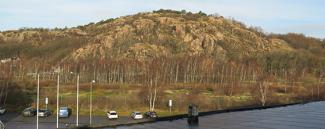
Mie talks about the difficulty of bridging the gap between inventory and action. When it comes to the role of culture in the development of the River City, where Lindholmen is included, it is considered so important that the municipal company Älvstranden Utveckling AB itself has invited two external consultants to invent cultural activities in the entire River City area. A positive sign of the importance of culture's role in today's Gothenburg, although the inventory is not being facilitated using the Cultural Affairs Administration’s tools and strategies.
Recommendations
Here is a selection of recommendations for how Lindholmen can be improved with culture as an integrative part of urban development:
• Keep the view from the central city and from the water which features cranes, quays and building volumes - it is part of the city's identity and important elements in the urban landscape. Let new supplements interact with this and with the mountain Ramberget, the area's premier space creator.
• Let the spatial qualities of the Götaverken (an former shipyard) area be an asset in urban development. Take inspiration from the area's functional robust character. Use industrial details and historical artefacts such as bollards, pollers, manholes, railroad tracks, old signs, and be inspired by, for example, carefully crafted street pavements.
• Tread carefully to not make the place to fancy or soften the character. Consider how the "ruff" parts can be left in Lindholmen to enable different types of activities. Allow self-organized artistic expressions.
• Provide more dockyard area, include the water and builds on established corridors.
• Improve the meeting venues highlighted in the inventory, eg. the public transport stops are important points.
• Enables meeting places indoors at night, for all ages, but focusing on young people. An important meeting place is the library.
• Create and area for temporary arrangements and events.
• Plan for parks and green spaces for people in harmony with architecture, with the possibility for activity and recreation.
• Enables cultural and creative activities to continue on Lindholmen. A priority is those areas where the essential conditions already exist, secondly, work for relocation when demolition is inevitable. If reallocated, connect the creative business with Götaverket's unique cultural environment.
• Develop a policy for the pricing of rental flats and facilities that enables cultural and creative activities to develop and establish themselves at Lindholmen.
• Develop the dialogue, invite to discussions and, when relevant, co-create. Develop new consultation methods. For example include architectural educators in the work. Be available, outgoing and honest.
The work with the Culture Impact Assessment is connected the project The Culture hub
Facts Culture Impact Assessment, KKA.
The inventory looks at:
• Aesthetic values
• Cultural heritage
• Permanent or temporary structures for meetings places and social and cultural nodes
• Creative and co-creative artistic organisations, activities and industries
• Values and symbols that create identity
Read more
The value of culture in urban development – a story on what came next
Projects about Culture
Urban Cultures: Case Kommersen
Kommersen 2.0 Culture Analytical planning North Masthugget
Culture and Heritage in Sustainable Urban Development
The Culture hub, Culture and Cultural Heritage for sustainable Cities step 2
